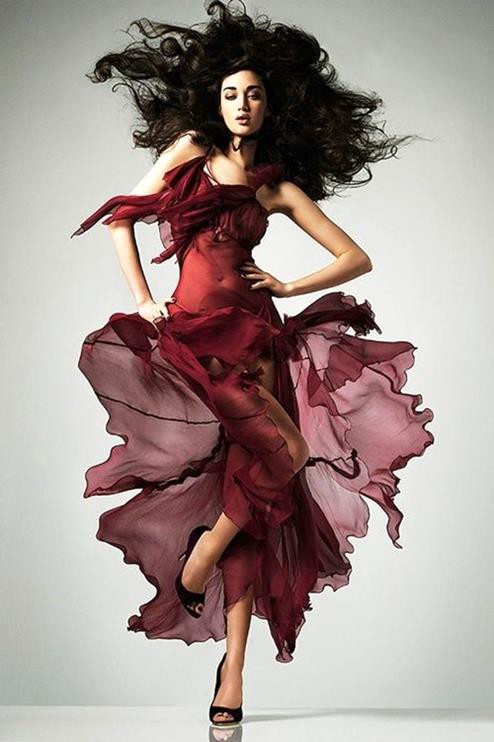The first part of this lesson task was to name three lighting sources and their functions as well as two light modifiers and the difference between them. We should also draw a diagram of the three-point lighting setup.
THREE LIGHT SOURCES
Light sources are anything that emit light onto the scene. Here I have listed three artificial light sources:
Tungsten lights: Tungsten lights are the common light bulbs used in lamps. They are a continuous light source that usually emit a warm color temperature compared to natural daylight.
LEDs: Another continuous light source. LED panels consists of hundreds of small light diodes. The benefit of LED studio lights is that both brightness and color temperature can be adjusted.
Strobe lights: Unlike the previous two, strobe lights are not continuous light sources, but instead bursts out a huge amount of light in a fraction of a second (flash).
TWO LIGHT MODIFIERS
Light modifiers are devices we attach to or hold in front of the light source to control the light pattern, which can improve the lighting in photos.
Reflectors and Softboxes: Reflectors are reflective surfaces that helps to cast directional light towards a subject. A reflector will help to minimize shadows by bouncing light off surfaces; softening, diffusing, or redirecting it. Softboxes are used to soften the light spread to the subject. While reflectors are used to reflect light, softboxes are placed over the light source itself. The light goes through a diffusion panel of white fabric, which soften and spreads out the light. The two light modifiers have a lot of the same functions, but are used in different ways. Softboxes are also a little more easy to control and has the additional option to choose the shape of the light.
THREE-POINT LIGHTNING SETUP
A Three-light setup consists of a key light, a fill light and a separation light. The key light is the main source of light used to light up the subject of the photo. The fill light is the secondary light, used to fill in dark shadows and soften their intensity. The separation light is used to separate the subject from the background. Primarily, a separation light outlines a subject’s shape and prevents edge details from being lost in highlights or shadows.

In the second part of this assignment we were to draw three studio setups for the following subject matters: Portrait, fashion and beauty. We should also find an image for each of these on the internet, and guess how we think the lighting was set up in each shot.
PORTRAIT
For the portrait, I chose a setup called “Loop lighting”. It is a simple and popular portrait lighting style that is achieved using a softbox on the key light, set on a 45 degree angle. It subtly defines facial features with soft shadows on the cheek opposite to the lighting.

FASHION
For the fashion shot, I also went for a simple, single-light setup. I found that the use of an umbrella to reflect the key light, pointing away from the subject, was a common practice for fashion photography.

BEAUTY
For beauty photography, I found that the lights should be soft. The most simple setup I found used to achieve this, was to use a soft box on the key light (still on a 45 degree angle), and a reflector on the other side of the subject, to soften and minimize shadows.

Then, I found an image for each category on the internet, to guess how the lightning was set up in the shots.
For the portrait, the shadows are on the left side of the face, which means a key light on the right (on about a 45 degrees angle). The background also seem to be lit up from below, which is why I think there is a back light put on the ground, directed upwards, towards the background.
The fashion photo has a key light on the left side, which is set above the subject and shines on a downwards angle. The shadows are pretty hard, so its hard to tell if there is any secondary light source.
For the beauty shot, I think the key light is put a little to the right of the centre of the subject, while a secondary light source — less bright, or with a softbox — is used on the left side. The shadows are very soft.



